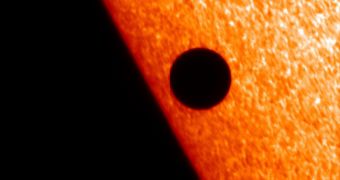Although it is one of the brightest planets in the solar system, Mercury is often referred to as the most difficult planet to spot, mostly because it orbits the Sun so closely. However, the truth is that Mercury is not that hard to locate in the night sky. People living in the northern hemisphere of the planet will have a great opportunity of viewing Mercury on the following days.
Its orbital trajectory takes it in the same general direction as the Sun. In ancient times, it was also being referred to as Apollo during morning, and considered to be a different cosmic body than the Mercury rising above the horizon during nighttime. Later, people realized that, in fact, Apollo and Mercury where one and the same.
Brightest 'star'
On Wednesday, Mercury passed superior conjunction, thus, by April 23, it will become visible half and hour after the sun has set on the horizon. During this time, it will appear to us as a star with a magnitude of -1.6, brighter that the brightest star on the night sky, Sirius. By 30 April, Mercury will set as late as 85 minutes after the sunset, appearing visible just above the Pleiades star cluster. While moving on its orbit, Mercury will gradually increase the distance to the Sun on the following days and its brightness will slightly decrease.
On May 6, Mercury will appear in the vicinity of the Moon, which will be in a 1.5 day crescent. Similarly to our Moon, the other inner rocky planets experience phases. Now Mercury is in a full disk phase, appearing at its highest brightness, however by May 14 it will reach the greatest distance to the Sun and will be in a half-phase, having a brightness of +0.4. From 14 May, Mercury will start to move gradually in the vicinity of the Sun, and decrease its brightness to a minimum.
Orbital resonance
Mercury has an orbital speed of about 48 kilometers per second, and completes a rotation around the Sun in just 88 days, while a spin around its axis requires 59 days. This, however, doesn't means that a Mercurian day is 59 Earth days long, but 176 Earth days due to the 3:2 ratio between the spin and orbit.
Therefore, the Sun shines the surface of Mercury 88 days at a time, heating it up to 482 degrees Celsius, while during nighttime, the surface cools to -184 degrees Celsius. Also, during the time when Mercury is at perihelion, it actually experiences a phenomenon when the Sun appears to set; however, it then rises again above horizon, remains there for a short period of time, before resuming its original course again.

 14 DAY TRIAL //
14 DAY TRIAL //